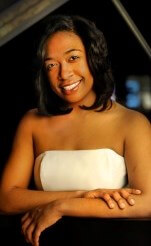Gershwin, Price, Copland- This concert takes the cake
This week’s Masterworks performances are sure to take the cake. The KSO 2017-18 season comes to a close this Thursday and Friday with “Rhapsody in Blue.” Performances are at 7:30 p.m. at the Tennessee Theatre with a pre-concert chat at 6:30. Tickets here.
Pianist Michelle Cann joins the Orchestra for not one but two piano concerti – both Gershwin’s infamous “Rhapsody in Blue,” and ‘Piano Concerto in One Movement’ by Florence Price, a lesser known composer whose work is beginning to make a come back.
The program opens with an upbeat treat, which will also serve as a teaser for the full production later this year. Leonard Bernstein’s Overture to Candide is a 5-minute concert opener that featuring melodies from the work, has enjoyed an independent life as one of the most popular concert pieces of the second half of the 20th century.
Since the premiere of Rhapsody in Blue, George Gershwin became recognized not only as an important composer of Broadway and popular melodies but a force to be reckoned with in classical music. Gershwin’s Rhapsody in Blueremains one of the most beloved and performed concert works by an American composer.
Our guest artist this week, Michelle Cann, holds degrees from the Cleveland Institute of Music and an Artist Diploma from the Curtis Institute of Music, where she later joined the staff as a Collaborative Staff Pianist.

Florence Price was the first African American woman to have her music played by a major American orchestra when the Chicago Symphony performed her Symphony in E minor in 1933. She lived from 1887-1953 and wrote symphonies, arrangements of spirituals and folk songs. More of her music, including violin and piano concertos, was not discovered until after her death.
You don’t want to miss the second half of this program, Aaron Copland’s Symphony No. 3, which includes Fanfare for the Common Man in the fourth movement, which many will recognize. This was the first symphony Copland composed, written just after World War II and is referred to as the “Great American Symphony.”
Copland describes the first movement as “broad and expansive in character”. The second movement serves the function of the Symphony’s lively scherzo. Copland describes the slow-tempo third movement as “the freest of all in formal structure. Copland’s Fanfare for the Common Man serves as the introduction to the main portion of the Symphony’s finale, which journeys to a majestic close.





